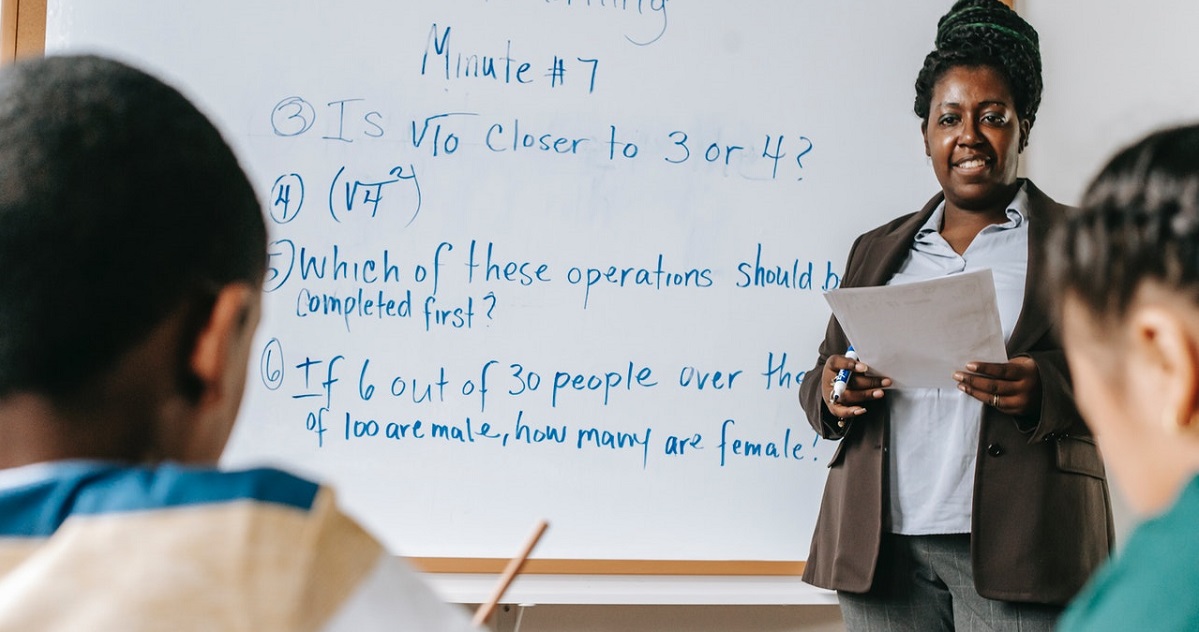
Learning is a very personal experience. So much of a student’s ability to learn is dictated by context. Not just because of the framing of lesson plans, but by how aspects of their lives inform and affect their ability to grasp concepts.
No educator wants a student to be left behind. It’s not always possible to differentiate instruction for each student. That’s why educators must consider which learning theories can serve individual students while also benefitting the entire class.
Social learning theory can be an agile tool to help make education more accessible to all students. Let’s take a closer look at why it’s beneficial for students and practical for teachers—whether the classroom is virtual or in-person.
What is social learning theory?
At its core, social learning theory is learning by observation. It’s based on the belief that when children see positive consequences of an action by others, they’re more likely to incorporate that action into their own behaviors and skill sets. The theory is most associated with the Bobo doll experiment of the 1960s. Observable changes in kids’ social behavior occurred after they witnessed an adult acting aggressively toward the doll. The subsequent consequences that adults were subjected to, because of their actions, influenced the behavior of the children observing the adults.
To make this theory practical for educators, its creator — Albert Bandura — emphasizes that it isn’t just observational learning that contributes to the theory’s effectiveness. There also must be an element of mediation that occurs between the stimuli and the responses; a critical thought process that allows kids to process what occurred and decide whether they should imitate the action(s).
This mediation takes the form of four types of internal processes. Attention — the observed behavior needs to be noteworthy enough for the child to fully focus on it. Retention — the observed behavior must be memorable enough for the child to remember it beyond the activity itself. Reproduction — the observed behavior can’t be so complex that it’s beyond the child’s ability to replicate it. Motivation — there needs to be a clear, understandable reason for the child to replicate the behavior; the rewards must outweigh the costs.
Social learning theory allows educators to take this knowledge of children’s thought processes and apply them to the classroom in ways that engage students. Moreover, it uses knowledge about their behavior to give teachers the tools to overcome their barriers to learning.
Benefits of implementation
How is social learning theory beneficial? Here are a few reasons:
It’s a more natural approach
One of the most difficult aspects of teaching is trying to help students learn through activities they don’t connect with. Some teaching styles are not well suited to all students. Utilizing social learning theory allows teachers to engage students in ways that align with natural social behavior.
It’s more enjoyable
Students are more receptive to learning if they enjoy being involved with lesson plans. Social learning theory lends itself to more varied, active, and stimulating forms of learning. Because it is based on observable scenarios and receiving rewards, it can be readily applied to simulations, role-playing, and gamification. These activities illustrate and support theoretical pedagogy, serving to provide a more varied and engaging overall curriculum.
It’s relevant to students
One reason why students become disengaged is that they fail to see how learning a subject is relevant to their interests or experiences. Social learning theory addresses this by tying the observable stimulus and its processing to how students respond. While it isn’t necessarily personalized to each individual, it is more broadly relevant to how students think and what they prioritize.
Methods of application
Social learning theory in classes is most effectively undertaken through blended learning. This eschews traditional forms of education. In one example, rather than a teacher lecturing in front of a classroom, students are provided with video homework assignments and then arrive in class the following day to apply their learnings with peers. In remote scenarios, this is often supported using tools like online whiteboards that allow students to collaborate on activities, sharing and discussing concepts they’ve learned.
In blended learning classrooms, teachers tend to mentor students using social learning theory. Educators will design and provide exercises and materials which encourage students to learn by observation — both from instructional videos and responses from their peers. As such, the introduction of simulations and games also form part of the core curriculum, whether it be using budget calculators to practice good financial habits or engaging in games that encourage critical-thinking skills. This allows students to observe lessons in real-time, consider the consequences, and apply critical thinking to discussions and exercises that follow. Social learning theory has a place in the contemporary teaching landscape, helping students make better connections with their education, their teachers, and their peers.
Noah Rue is a journalist and content writer, fascinated with the intersection between global health, personal wellness, and modern technology. When he isn’t searching out his next great writing opportunity, Noah likes to shut off his devices and head to the mountains to disconnect.
Categorized as: Tips for Teachers and Classroom Resources
Tagged as: Classroom Instruction, Mid-Career Teacher, New Teacher, Teacher Best Practices, Veteran Teacher
